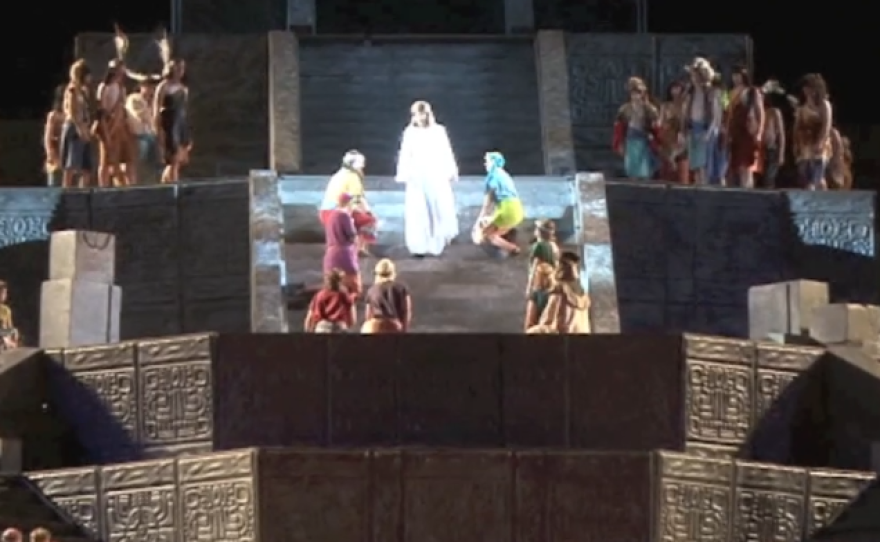With 750 cast members, more than a thousand costumes, and special effects to rival a James Cameron film, the Hill Cumorah Pageant draws thousands of people to western New York each year.
They come in droves, from around the world, converging on the town of Palmyra to witness a Mormon spectacle taking place way off-Broadway.
There’s a ten-level stage, a burning at the stake, and cast members descending on wires.
But, this theatrical retelling of the history of Mormonism brings more than entertainment to the upstate region. The spectacle is responsible for an annual shot-in-the-arm for the local economy.
“We welcome them with open arms. We depend on the tourists and the tourist season at this time of the year,” says local business owner Joanna Lee.
Lee says her business doubles during pageant season, and even through the recession the crowds continued to flock to the area.
At local restaurant the Chill and Grill, the story’s no different. Morgan, a shift manager at the ice cream and burger house, says there are lines out the door almost every day at this time of year.
“We get people from Texas, we had people from France the other day come in, so it’s kind of cool to see everyone from around the world come trekking into chill and grill, ‘cause, you know, it’s a small town.”
This boost to the local economy isn’t confined to Palmyra.
According to executive officer of the Religious Research Association, Dr. Bill Swatos, religious pilgrimage plays a role in sustaining many small communities across the US.
Swatos says sacred sites and economic growth have gone hand-in-hand for centuries.
“There’s always an economic element to pilgrimage just as there is with tourism, but the religious aspect simply differentiates one might want to say, the kind of ism that’s occurring,” says Swatos.
Where religious travel and conventional tourism tend to differ, he says, is during economic downturns.
“In tough times you’re more likely to see the pilgrimage sustained than you are the purely touristic kind of travel.”
This was proven repeatedly throughout the recession as people flocked to the hill in Palmyra where it’s said an angel led Joseph Smith to discover the Book of Mormon two centuries ago.
The pageant still attracted thousands, and just down the road, visitors still frequented Joseph Smith’s farm.
Bill Swatos says, as long as people are continuing to make the journey, they’ll come with money in their pockets.
“They still carry on their real lives while they’re on pilgrimage by going shopping, by eating out, by various kinds of participation in the lives of the community.”
Profits spill out into the broader community too.
For the past 22 years four service clubs from western New York have run the concession stands for audiences of the Hill Cumorah Pageant.
Susan Johnson, secretary to the local Lions Club, says 100 percent of their financing for the year comes from this single event.
“And without it, I don’t know what we could do because it’s hard, so many groups have fund raisers it’s hard to think of something new to raise that kind of money.”
The Hill Cumorah pageant closes this weekend, with the last performance Saturday night. But, as it has each year since 1937, the show is set to replay in 2014.






